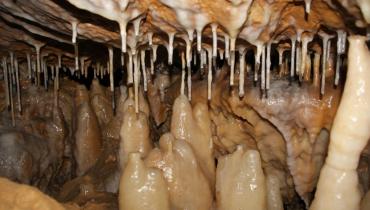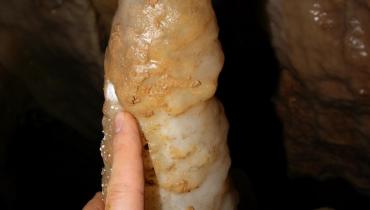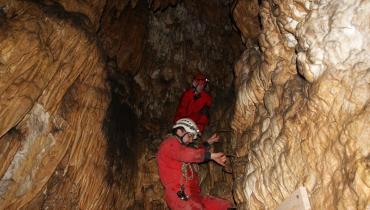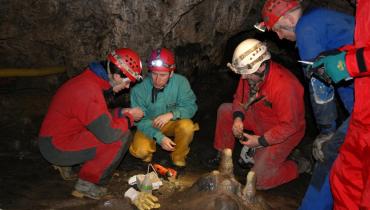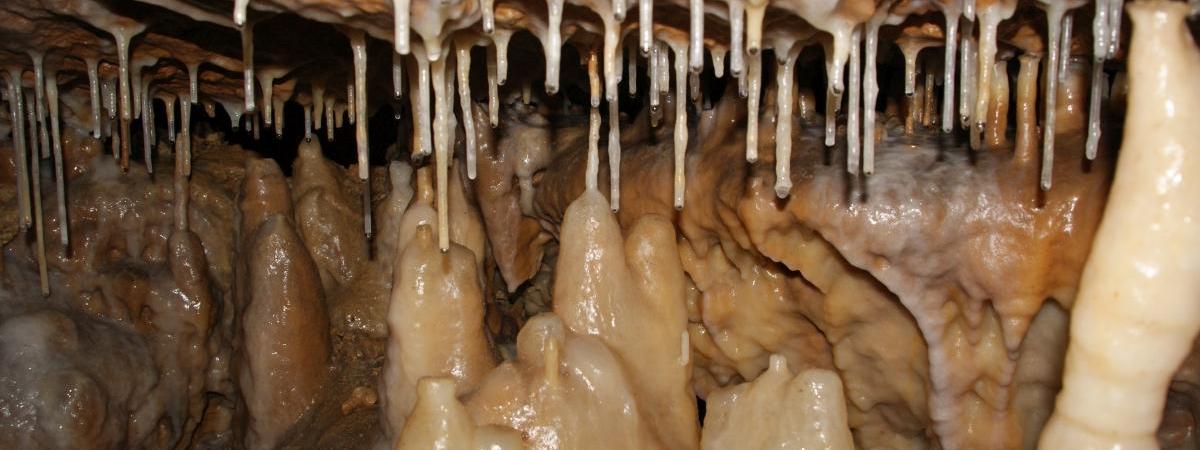
The aim of the research project "Check Extrema" was to identify extreme hydrological events using geological and historical archives from southern Germany and to quantify their intensity. The focus was on whether and how extreme events were recorded in geological archives, and which historical records provide more objective information about them. As part of the project, historical records from the State and City Archives in Nuernberg were analyzed using high-resolution time series of geochemical proxies in stalagmites from Franconian Switzerland and the Bavarian Alps.
A key finding is that, under suitable local conditions, short-term climatic fluctuations on an annual scale are visible in the stalagmite. For example, cooler years with increased winter precipitation, which favor spring flooding, are visible through significantly more negative oxygen isotope values. Furthermore, trace elements such as Sr, Mg and Fe can be indicators of heavy precipitation events.
As an alternative to the typically used chronicles, council records were analyzed as a more objective source of information on climatic extremes. These document floods with their relevance for the city and in some cases provide very precise information about their consequences.
By comparing the information from the administrative records of the imperial city with the local flood chronology and the geochemical stalagmite data, a detailed, more objective compilation of the events is possible and forms the basis for transferring the methodology to extended questions in the historical/archaeological research field and paleoclimate reconstruction.
Project details
Project management
2024
Heidelberg University, Press Release No. 5/2024
https://www.uni-heidelberg.de/en/newsroom/stalagmites-as-climate-archive
2023
T. Kluge, P. Holz, T. Neumann, E. Eiche, M. Schuh, N. Frank, R. Friedrich, R. Mertz-Kraus, A. Land, M. Trieloff, A. K. Schmitt: Assessment of climate extremes at the regional scale during the last millennium using an annually resolved stalagmite record. Earth and Planetary Science Letters, 624 (2023), 118458 (available online 4 November 2023) https://doi.org/10.1016/j.epsl.2023.118458


